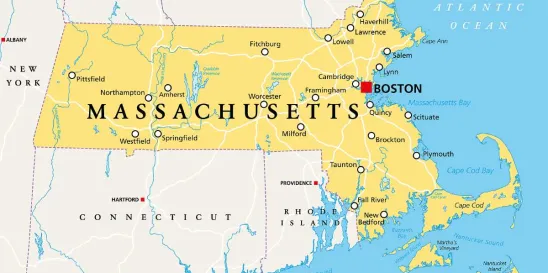In its decision today in Berger v. 2 Wyndcliff, LLC (pdf), the Massachusetts Appeals Court answered an important question about extending common-scheme real estate restrictions beyond the presumptive statutory limit of 30 years. As to restrictions imposed as part of a common scheme applicable to four or more contiguous lots, M.G.L. c. 184, § 27 states in relevant part that an otherwise enforceable restriction cannot be enforced after 30 years:
unless . . . provision is made in the instrument or instruments imposing it for extension for further periods of not more than twenty years at a time by owners of record, at the time of recording of the extension, of fifty percent or more of the restricted area in which the subject parcel is located, and an extension in accordance with such provision is recorded before the expiration of the thirty years or earlier date of termination specified in the instrument . . . .
Berger presents a dispute between owners of lots subject to a common-scheme restriction imposed in 1980. The restriction limits the lots to use for one single-family dwelling, a two- or three-car garage, and certain accessory structures. The restriction says it is binding “for a period of thirty (30) years from the date these covenants are recorded,” and may be amended or revoked by an instrument signed by two-thirds or more of the then-owners of the covered lots. In 2001, more than two-thirds of the lot owners amended the restriction to provide that it would expire after 30 years as originally stated, and that “[t]hereafter, [the restriction] may be extended for further periods of not more than twenty (20) years at a time . . . if such extension, duly executed by the aforesaid Lot owners, is recorded before the expiration of the aforesaid twenty (20) years or the specified extension term if less than twenty (20) years.” In other words, the amendment purported to allow two-thirds of the lot owners to extend the restriction beyond its stated 30-year term for (ostensibly unlimited) additional periods of 20 years each. In 2002, more than two-thirds of the lot owners recorded a 20-year extension of the restriction.
In 2013, two groups of lot owners sued each other. The plaintiffs contended that the 2001 amendment complied with the statute and, therefore, the 2002 extension was effective. The defendants took the position that the restriction expired by its terms after 30 years and the 2001 amendment was ineffective. The Land Court ruled in the defendants’ favor and the Appeals Court affirmed.
The Appeals Court read the statutory language “unless . . . provision is made in the instrument or instruments imposing it for extension for further periods” to mean that a provision expressly authorizing extensions must appear in the original instrument. The court rejected the plaintiffs’ claim that, because in 2001 the restriction was amended to allow extensions, the extension provision was then (and is now) “made in the instrument.” The court observed that a purchaser of a lot after 1980 would be on notice not only that the property was restricted, but also that the restriction would expire in 30 years. The court noted that its reading of the statute “ensures that, after thirty years, no owner is bound by a restriction unless that owner, whenever he or she bought the lot in question, expressly agreed to the mechanism by which the restrictions could be extended.” Accordingly, the court concluded, an extension provision “cannot be added by a later vote (even a majority vote) of less than the agreement of one hundred percent of all property owners in the common scheme.”
In Berger the Appeals Court has answered a key, lingering question about M.G.L. c. 184, § 27. Real estate practitioners are now on notice that, to be extendable beyond 30 years, a common-scheme restriction must include an extension provision in the original document.



 />i
/>i

